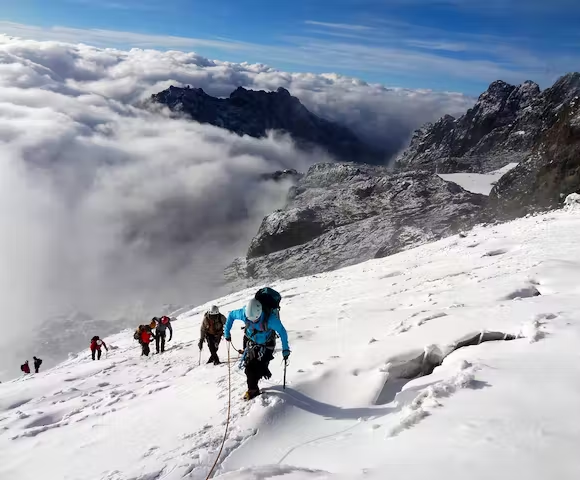
Mount Stanley
Mount Stanley
Mount Stanley is the highest massif on the Rwenzori Mountains was named after an European explorer Sir Henry Murton Stanley. He was the first European to reach at this point on his Ugandan journey. The Rwenzori ranges is part of Rwenzori mountains national park, and were declared a UNESCO world heritage site.
Mountain Rwenzori is located in the western part of Uganda, near the border of Uganda and Democratic Republic of Congo. It is the 3rd highest peak in Africa with an elevation or height of 5109 meters, it’s the third highest mountain Africa after Mount Kilimanjaro and Kenya.
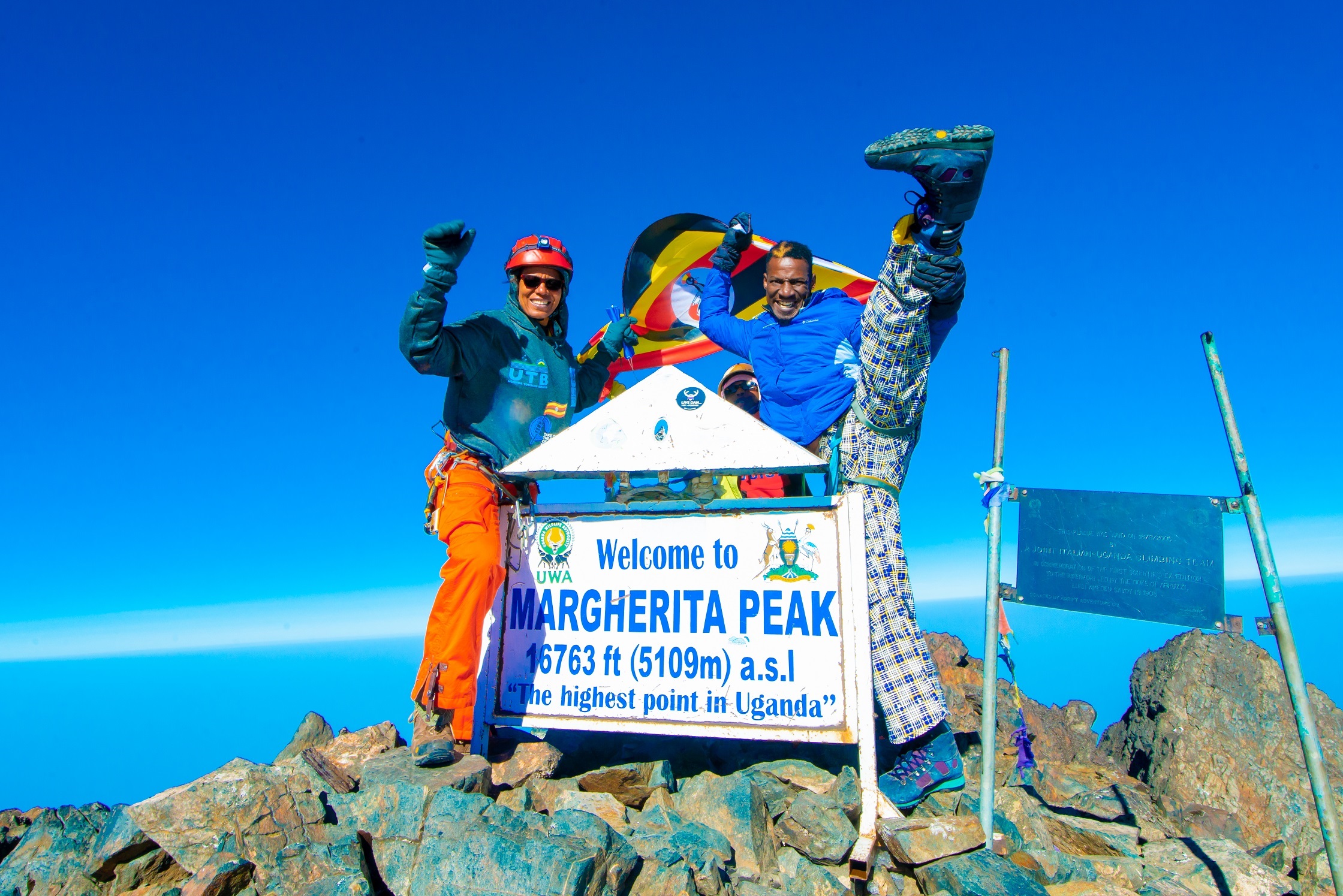
It is a spectacular mountain rising through jungle and otherworldly bogs, culminating in a number of sharp peaks surrounded by one of Africa’s largest concentration of glaciers. These peaks include:
- Margherita Pk.5109 meters The rightmost summit, Alexandra immediately left.
- Alexandra Pk. 5091 meters from Margherita Summit
- Albert Pk. 5087 meters
- Savoia Pk. 4977 meters Highest Summit to the left.
- Elena Pk.4970 meters
- Elizabeth Pk.4928 meters
- Philip Pk. 4919 meters
- Moebius4918 meters
- Kitasamba4860 meters
- Nyabubuya4860 meters
Book your 13 Days Rwenzori Trekking tour with Pamoja Tours and Travel to take on this expedition to the peak.
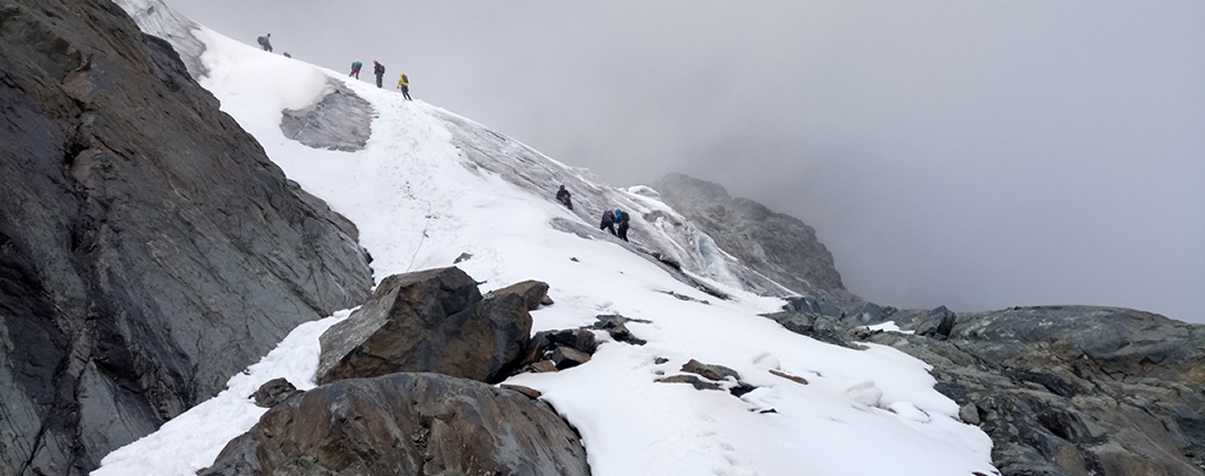
History
For a number of years explorers attempted to reach the peaks but were always turned back by the thick vegetation, bad weather, disease, or lack of time. However, in 1906, the Duke of Abruzzi led an expedition replete with six scientists, four alpine guides and the phenomenal photographer Vittorio Sella. With the help of over 300 porters, they climbed to the highest points of the six massifs in the range that at that time contained glaciers, including the highest peaks of Mt. Stanley. The ascent of Margherita Peak was made by the Duke, J. Petigax, C. Ollier and J. Brocherel on a traverse from the summit of Alexandra Peak.
Sadly in the intervening years, the area has been plagued by political instability, warfare and dictators and malaria. In 2003, there were reports of AK-47 toting cannibals roaming through the town of Bunia across the rift valley from the range in the Democratic Republic of the Congo. Additionally, the once magnificent glaciers have retreated profoundly. Three massifs have lost their ice entirely. Mt. Baker only has a few minor remnant glaciers, and Mt. Speke a single remaining glacier of any consequence. Mt. Stanley is currently the only peak in the range that still contains extensive glaciation.
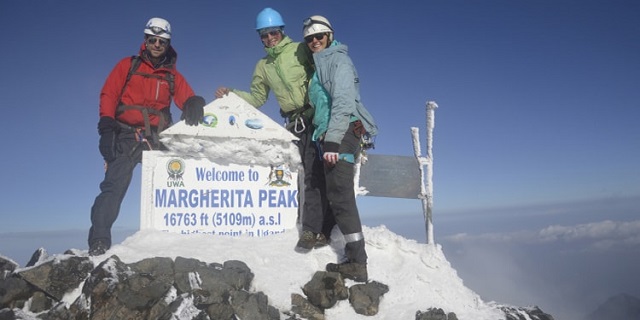
Climate
Mt. Stanley is a fault block mountain rising between two rifts in the African Rift System. The mountains are nearly covered in mists, rains with frequent thunder and lightning. No where else in the world is there such an astonishing collection of fog, moss, and forests.
Most of the year, heavy rain, sleet and snow lash the range, but the two drier periods are January/February and mid June through mid August. There can be weeks of constant fog and shower, however we highly recommend you plan your trip for one of those time periods. Even then,.
The Rwenzori Mountains are home to a number of endemic wildlife species including the legendary three-horned chameleons or “Johnston’s Chameleon. The scientific name Trioceros jacksonii, comes from the Chamaeleonidae family in the East African region including Uganda. The name “Trioceros” means three (for the three horns found on the heads of mature chameleons) and “Jacksonii” was derived from Fredrick John Jackson, the first Governor of Kenya who was also a popular explorer and ornithologist.
Mount Stanley
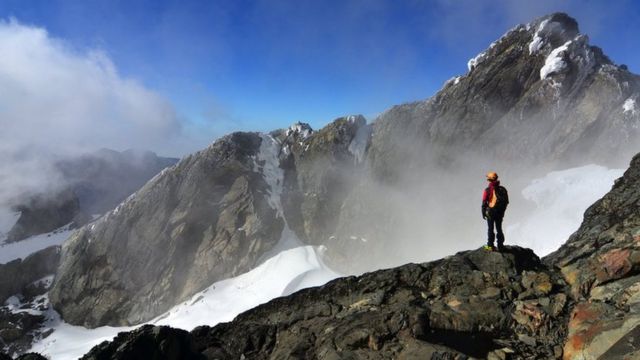
It’s one of East Africa’s endemic species that inhabit regions with higher elevations of at least 3000 meters above sea-level. This is the reason why the three-horned chameleons occupy the higher slopes of the magnificent Rwenzori Mountains among other places.
Like other Chameleons, they also change color for protection or to easily hunt down their preys including small insects. Change of color is also a means of communication because they can express mood to fellow chameleons and show intentions of either courting with the females or even fighting a male counterpart.
One interesting and recognizable difference between the male three-horned chameleons and the other species are the three horns on their foreheads. Like other specie s, these chameleons camouflage using their extraordinary skills that changes color to blend with the surrounding environment. Majority of the chameleons use this wonderful talent of changing colors so as to hide away from enemies especially predators that include the dangerous snakes and birds.
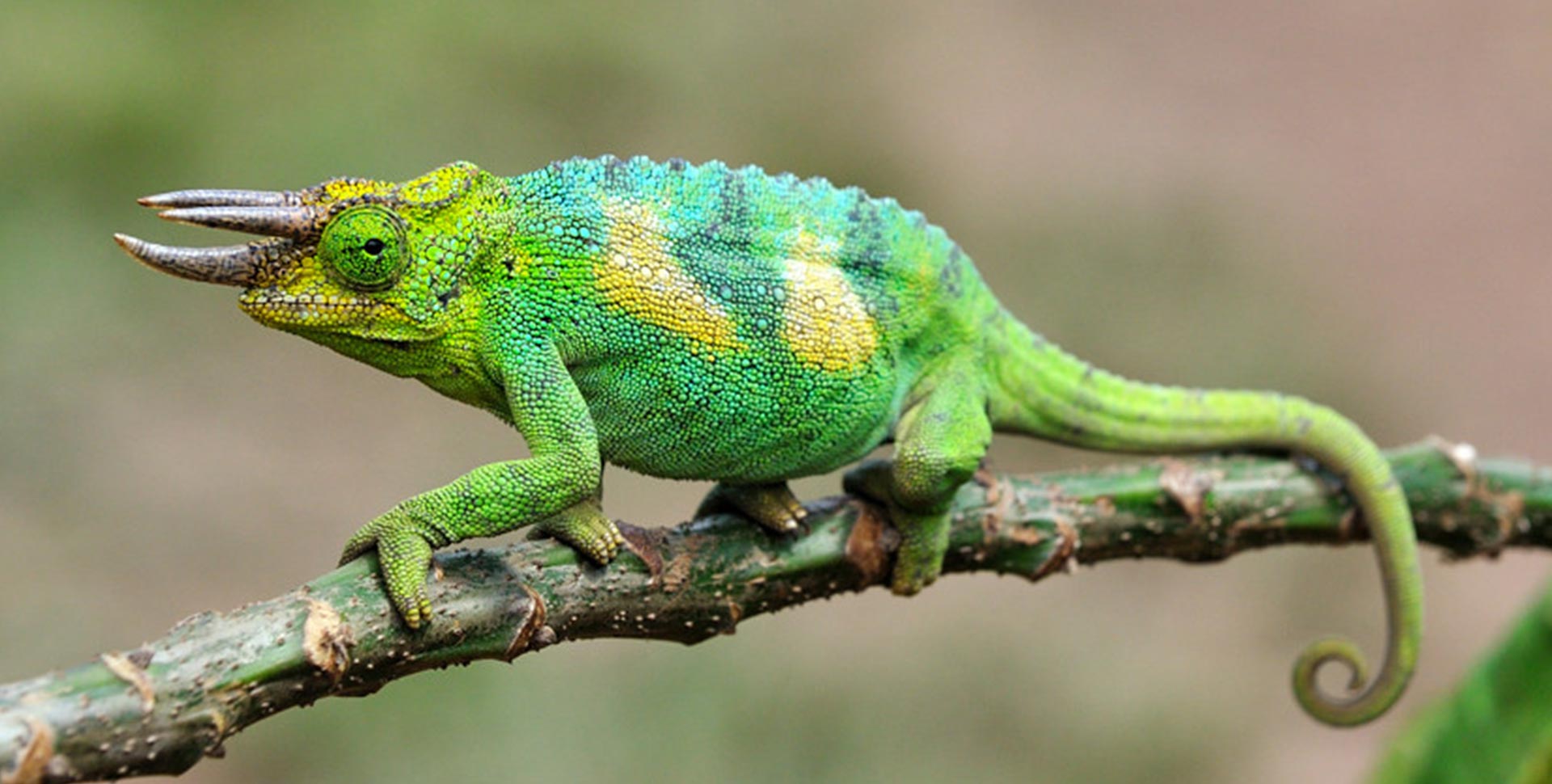
These three-horned chameleons have a lifespan of around 10 years while in captivity. By about 6 to 12 months, an average mature Johnston’s chameleon measures 30 centimeters long. A mature male measures up to 38 centimeters whereas the females measure up to 25 centimeters
How many babies does a chameleon have?
Depending on the species of chameleon, eggs take between 4 and 12 months to hatch. The chameleons digs very deep in the ground to keep its eggs. Chameleons can often have over 20 babies in one period. They always give birth to 8 to 30 off springs after a gestation period of 5 to 6 months.
These exceptional Chameleon species are endemic to the Albertine rift valley region and can be seen within Uganda’s Bwindi Impenetrable, Rwenzori Mountains and Mgahinga Gorilla National Park, in the Eastern Democratic Republic of Congo and Rwanda.
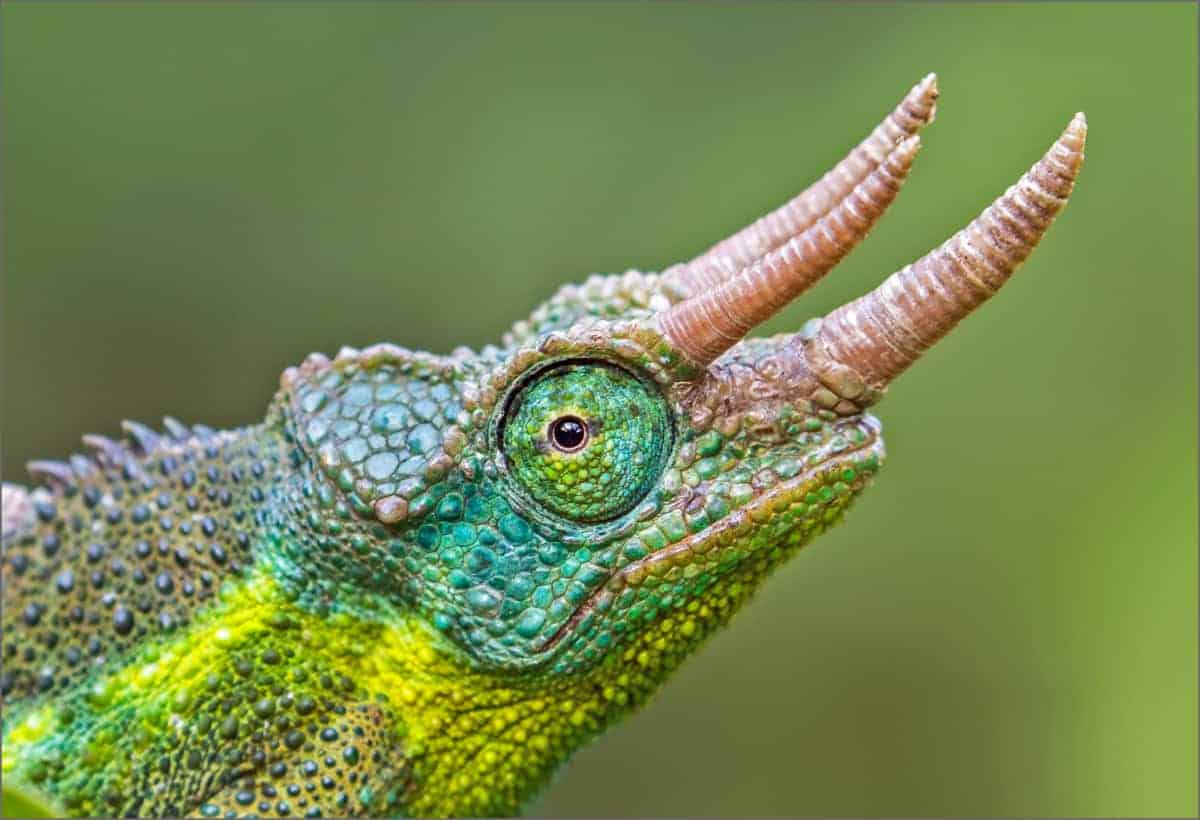
They are omnivorous animals with their diet mainly comprising of insects such as bugs, grasshoppers, small birds, crickets, spiders, and butterflies as well as snails, millipedes, centipedes, lizards as well as small birds, but are also prey to snakes and larger birds.
Unfortunately, the Johnston’s Chameleons are normally threatened by humans who destroy their habitats while others keep them in captivity. This is because of the myths that they are very magical due to their horns hence a great threat to their survival.
Three-horned chameleons have tongues with unique muscles at the tip to allow them trap their prey. Their feet are different from that of the Lizards because they are capable of holding on tree trunks while climbing up. Their exceptional eyes are able to rotate for 360 degrees hence can see in all directions even when not moving. This also offers opportunities of capturing their prey from all directions or even protecting themselves against their predators.
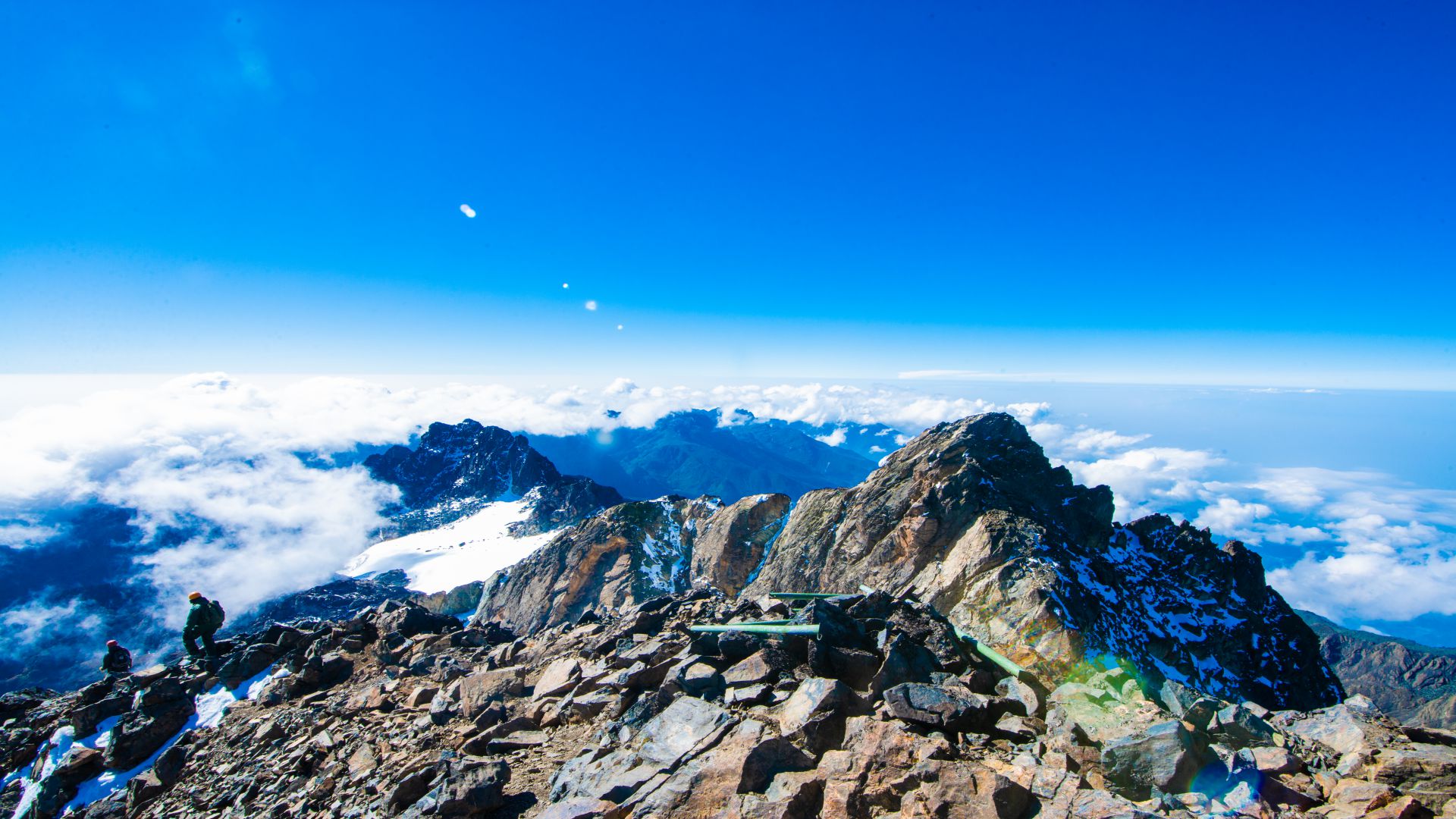
12 Days Rwenzori Trekking
The 12 days trek takes you through all the 6 mountains of Rwenzori using the central circuit trail. You will hike to the top of mount Gessi, Emin, Speke, Stanley, Luigi Savoia and Baker. without missing the chance to reach Margherita the highest peak in the Rwenzori is on mount Stanley which is snow capped most of the year. The other peaks are mostly rocky which makes the hike challenging because the rocks are slippery sometimes. These peaks all offer beautiful views of the Rwenzori massif.
Book your 13 Days Rwenzori Trekking tour with Pamoja Tours and Travel to take on this expedition to the peak.
Day 1: Nyakalengija (1600m) to Nyabitaba hut (2650m)
The hike will Start the hike from Nyakalengija (RMS park headquarters) through the Bakonzo settlements to mount Rwenzori national park gate where you will be registered before entering the park. You will start the central circuit trail trek through the thick tropical with high elephant grass and dense bushes.
This forest is a home to various animal species like forest elephant, chimpanzee, hyrax, black-and-white colobus, L’Hoest’s monkeys, duiker, and three horned chameleon among many more. Some of the bird species include; Handsome Francolin, Rwenzori Turaco, Long-eared Owl, Barred Long-tailed Cuckoo, Cinnamon-chested Bee-eater, Strange Weaver, Archers’ Robin-chat, Rwenzori Batis among many others as well as various tree and plant species. You will expect to see some of them.
It’s about 8km from Nyakalengija to Nyabitaba hut. Dinner and overnight at Nyabitaba hut.
Day 2: Nyabitaba to john matte camp (3420m)
Have breakfast at the hut, you will move through thick shrubs and forest for about 30 minutes to the Kurt Shafer bridge which is at the confluence of the Mubuku and Bujuku rivers. You will then move though the bamboo mixed with montane forests and slippery moss covered rocks for a couple of hours. You will continue to move up to Nyamulejju rock shelter where the first hikers used to at times camp and also spend the night, you will have a stopover here for lunch.
At this point you will have a view of mount Stanley and mount Speke if the weather is clear. Through the alpine forest, you will reach john matte camp. The hut is near river Bujuku and most hikers take a bath there, the water is so cold but so refreshing as well. You will also have a view of the Margherita glacier which is on mount Stanley between Alexandra and Margherita peaks. Nyabitaba to John Matte is about 11km.
Book your 13 Days Rwenzori Trekking tour with Pamoja Tours and Travel to take on this expedition to the peak.
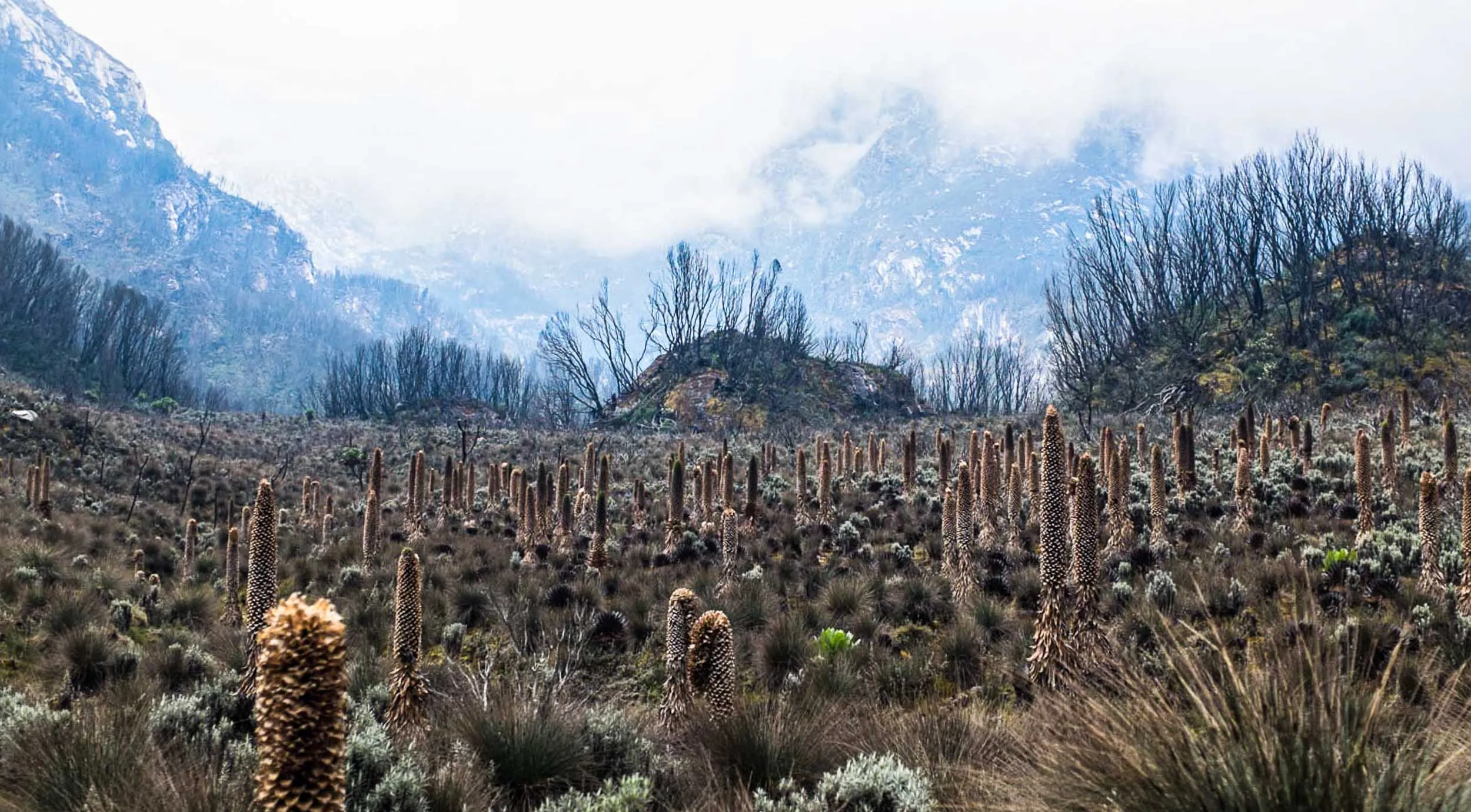
Day 3: hike mount Emin (4798m) – overnight as above
After breakfast at the lodge, you will start the trek through the alpine forests to the base of mount Emin. You will then hike to the top of mount Emin. The top will meet you with beautiful views of the Rwenzori massif. Return to the camp where you will have dinner and spend the night.
Day 4: hike mount Gessi – overnight as above
After breakfast at the camp, you will start the trek and then hike to the top of mount Gessi. This is a rarely trekked mountain so the path might not be so clear. Hike to the top and then descend back to the camp.
Day 5: John matte to Bujuku (3930m)
After breakfast at the hut, you will cross river Bujuku and through forest to the lower bigo bog. This is a swampy area in a valley and is a home to the giant lobelias. This area used to be hardest part of the Rwenzori since the area is so boggy, jumping from one tussock to another was not so easy for most hikers more so females. Currently, there is a walk board up to the end of the boggy area which makes the walk much easier for trekkers. As you move you will expect to see giant lobelias, everlasting flowers and groundsels.
You will then take a steep hike along a ridge which will lead you to the start of the upper bigo bog. There is also a board walk up to Lake Bujuku. After the board walk you will try to move through the remaining small boggy area with no walk boards to Bujuku hut. At this point, you will have a view of Lake Bujuku, mount Speke, Mount Baker and mount Stanley. At this point you are able to ascend mount Speke and mount Stanley. Distance from john matte to Bujuku is about 5km. dinner and overnight at Bujuku.
Book your 13 Days Rwenzori Trekking tour with Pamoja Tours and Travel to take on this expedition to the peak.
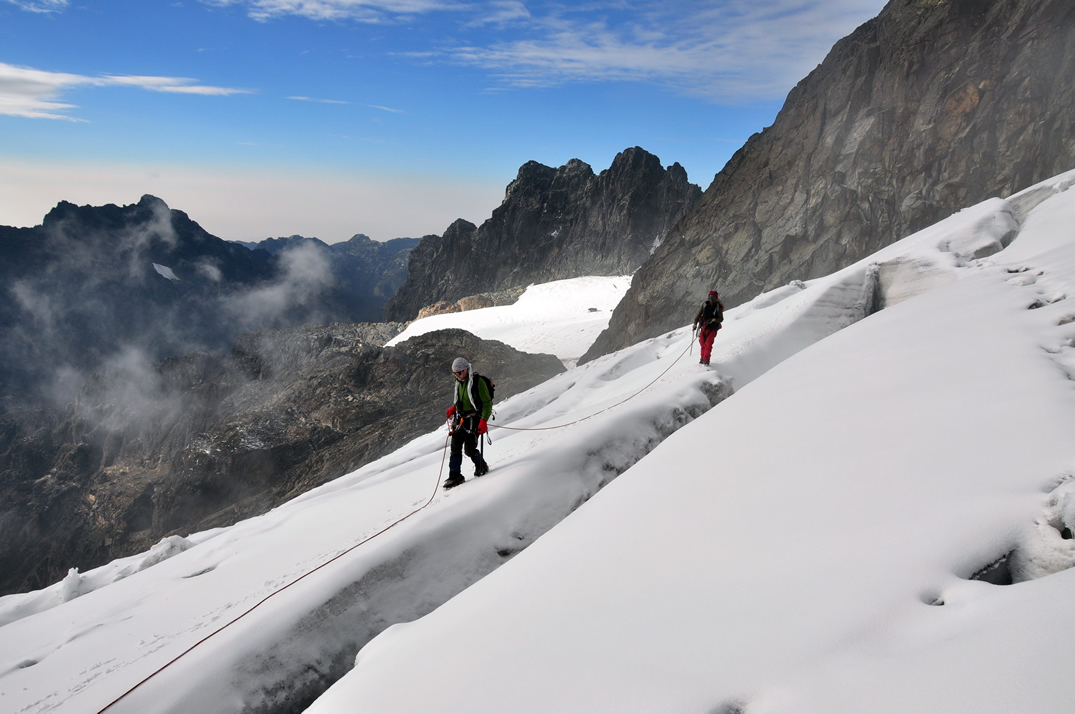
Day 6: hike mount Speke and transfer to Elena camp (4563m)
After breakfast at the camp, you will start the hike to the top of mount Speke. This trek is a bit challenging because of being rocky. The top will offer you beautiful views of the Rwenzori features. You will then descend back to the camp where you will have lunch.
You will move through the sides of the upper Bigo bog, then hike through the steep slopes the steep slopes of Lake Bujuku. While climbing Lake Bujuku’s steep slopes on the west, the trail ascends to the 4372 meter Scott-Elliot pass, and you will pass through more swamps and the thrilling Ground gully. You will go over a steep section at the top of the gully using a metal ladder.
The trail is then divided into two. The two trails, the left trail leads to Scott-Elliot pass descending to Kitandara Lakes while the right trail heads to the Elena Hut and on a steep trail above large boulders to Mt Stanley. Elena hut is at the rocky part of Mount Stanley and the area is too cold. At this point, you are at the highest mountain of the Rwenzori and you will have a direct view of Mount Baker and Mount Speke. Sometimes it is hard to view these two mountains because they are covered by fog. Have dinner at Elena hut then spend the night.
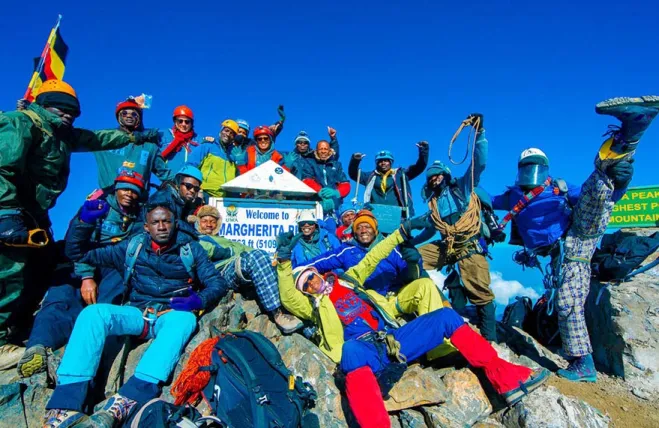
Day 7: summit Margherita peak and transfer to Kitandara (3979m)
This day you will have to wake up as early as 2.am, Have breakfast at Elena hut, be ready in your warmest gear, put on your harness, warm hand gloves and headsock, have your headlamps and helmets and make sure you have sunglasses in the day pack on. Hike to the top of mount Stanley, Magherita peak, through the Stanley plateau. On steep rocky areas, you will use the ropes to help you move. The guide will teach you how to use the equipment while on the ice. On the glacial parts you will be required to use you, crampons, and ice axe.
After moving for a couple of hours after the Stanley plateau glacier, you will reach the bottom of the Margherita glacier. This is the most challenging part of the entire hiking Rwenzori experience. You will hike through this glacier uo to the top of mount Stanley, Margherita peak (5109m). At the top you will have a view of Ireen Lake, mount Speke and the surrounding environment. Then descend to Elena Hut for Lunch and later proceed to descend to Kitandara through the Scott Elliot pass to Kitandara, it is the most beautiful point of the Rwenzori. Have dinner at Kitandara then spend the night. If the group is big, you might spend another night at Elena hut and continue the following day.
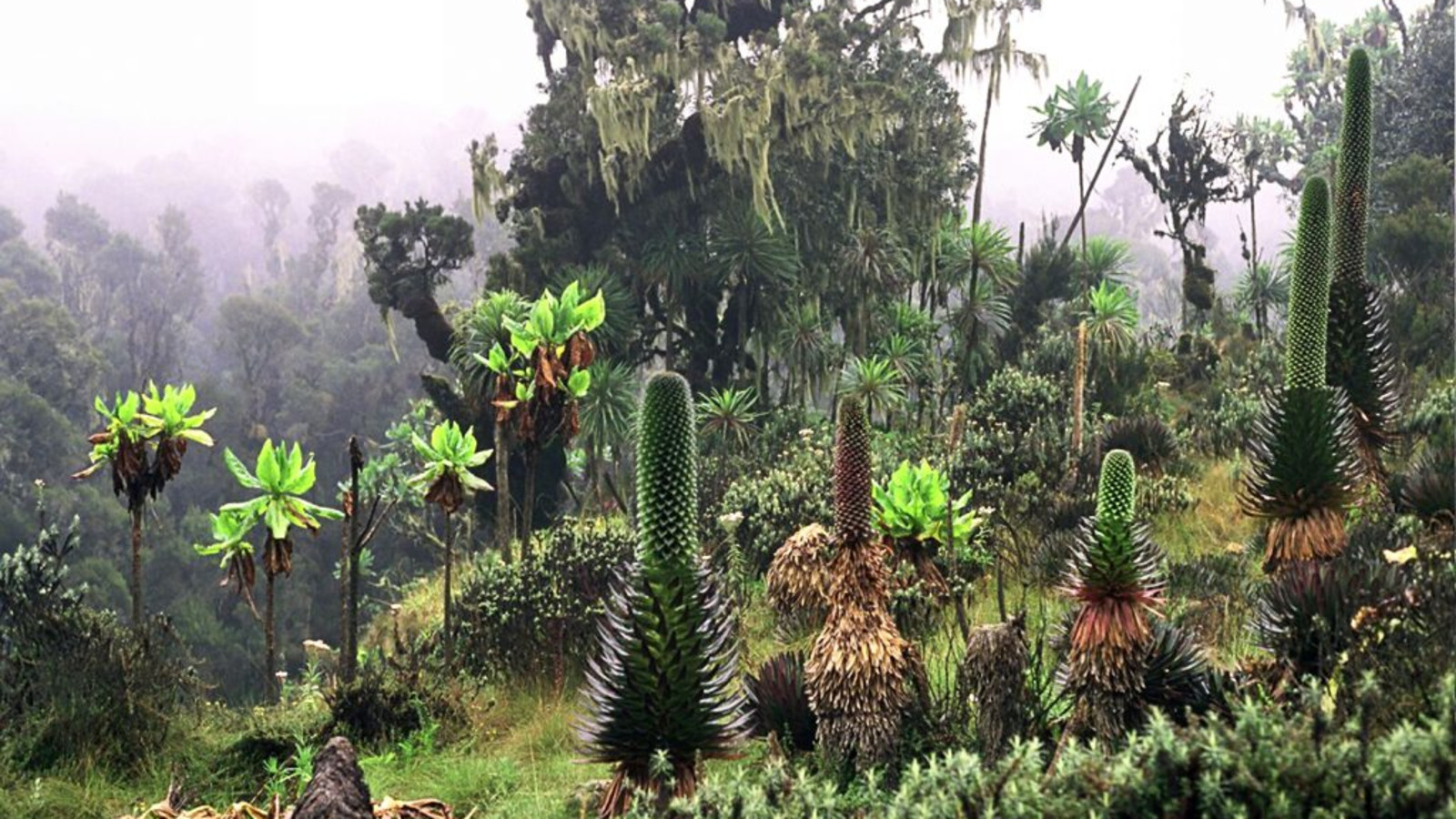
Day 8: hike baker – overnight at Kitandara
After breakfast at the camp, you will start the trek to the start of Mount Baker hike. Mount Baker is mostly rocky and sometimes the top is covered by snow. You will need good boots since the rocks get wet and slippery, you also have to always watch your steps. While at the top, you will have a view of mount Stanley and Speke as well as beautiful views of the pf the Rwenzori valleys and vegetation. Dinner and overnight at Kitandara camp.
Book your 13 Days Rwenzori Trekking tour with Pamoja Tours and Travel to take on this expedition to the peak.
Day 9: hike Luigi Savoia – overnight at Kitandara
After breakfast at Kitandara camp, you will start the trek to the top of Luigi Savoia. The hike involves a steep ascent on solid rock – it is important to follow the advice of your climb guides and not to rush during the ascent. It is normally safe to climb without ropes, but in the event of icy conditions, your guides will employ fixed ropes to ensure a safe ascent. Your reward for summiting will be wonderful views towards the Kachope Lakes below and to Mts Baker and Stanley in the distance.
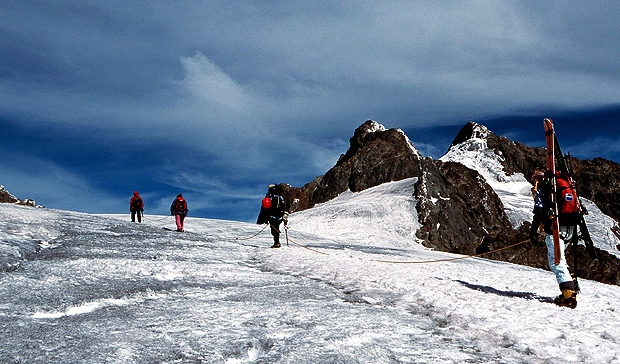
Day 10: Kitandara to guy yeoman camp (3505m)
Have breakfast at Kitandara then move through the base of Mount Baker, which can be slippery so you will need to be so careful. From Kitandara, the trail ascends steeply up the headwall, spreading out from the base of Mount Baker and continuing along the south side of the Rwenzori Mountain to Fresh field pass. From the pass, the long muddy descent continues, passing the rock shelter at Bujangolo, the base camp for the historic expedition by the Duke of Abruzzi in 1906.
This will take you around 4-6 hours then reach Guy Yeoman hut which is located at the banks of river Mubuku. From there, you will have dinner and spend the night there.
Day 11: guy yeoman to Nyabitaba
From Guy Yeoman, you will descend to Nyabitaba through the bamboo forests. The path down can be slippery and muddy with little to hold on to and requires careful balancing over the vertical mud or steep rock. Dinner and overnight at Nyabitaba. His takes between 4-5 hours.
Day 12: Nyabitaba to Nyakalengija
After break you will descend for about 3 hours to Nyakalengija. You will pass through the tropical forests where you will expect to spot the three horned chameleon, black and white colobus monkeys, as well as bird species. Have lunch at Ruboni community camp, and conclude your hike safari.
Book your 13 Days Rwenzori Trekking tour with Pamoja Tours and Travel to take on this expedition to the peak.
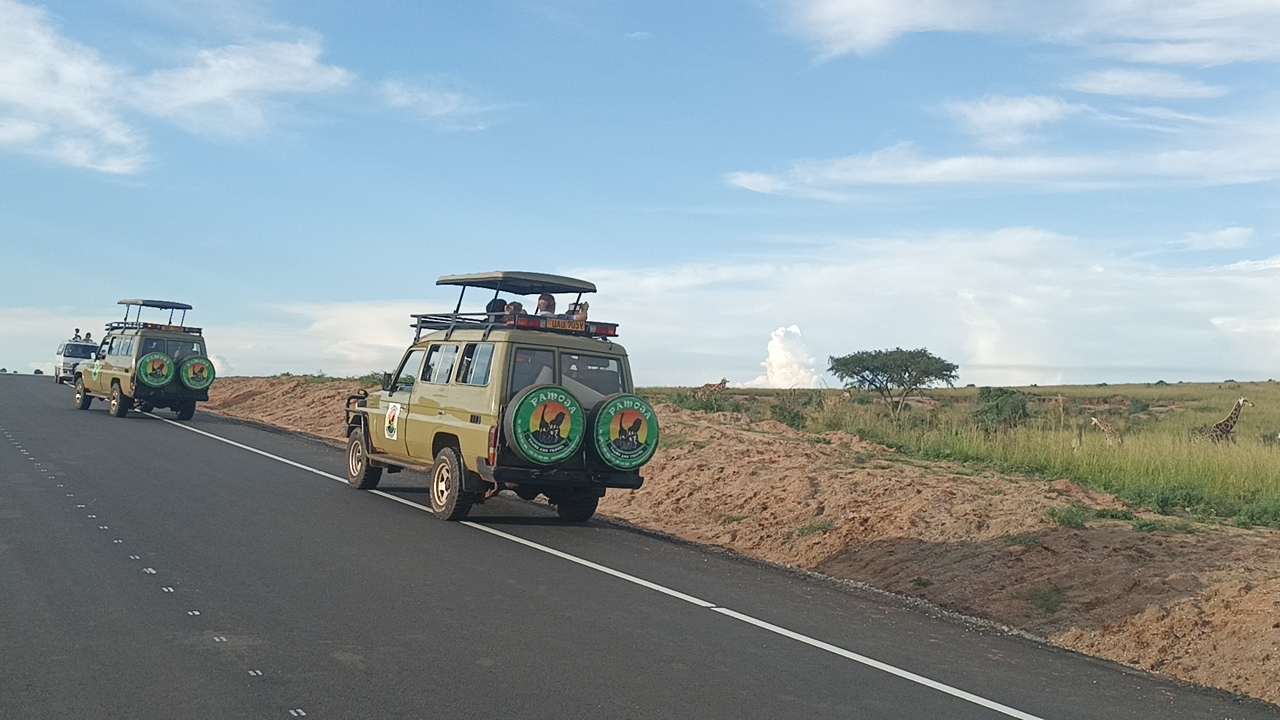
Getting There
You travel from Kampala/ Entebbe International Airport heading to western Uganda to Kasese District. You can use the Fort Portal route or the masaka-mbarara highway to reach Kasese and connect to the park.
In conclusion
The Rwenzori mountains have more to offer beyond your eyes, and as you make your way towards Mt Stanely. When hiking to Margherita peak, it’s hard to believe that you’re in Africa as you get to touch the snow at 5,109 metres.
When your planning a trek to the Rwenzori mountains, always travel through a tour company. Pamoja Tours and Travel is one of the best tour companies in East Africa and will organise for you a memorable safari, straight from the airport, to Margherita peak.
If you have plans of traveling to any national park in East Africa, travel with Pamoja Tours and Travel. Pamoja Tours and Travel has a variety of complete and also tailor-made safaris ta take you to any National Park.






